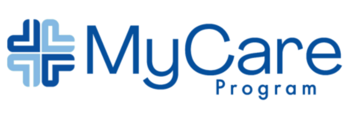Brief Overview: Osteoarthritis is a degenerative joint disease characterized by the breakdown of cartilage and underlying bone within joints, leading to pain, stiffness, and reduced mobility.
Prevalence: Osteoarthritis is the most common form of arthritis, affecting over 32.5 million adults in the United States. It commonly occurs in older adults but can affect younger individuals due to joint injuries or genetic predisposition.
Etiology: The condition results from the mechanical wear and tear of joints, compounded by biochemical changes in the cartilage. Over time, cartilage degradation leads to joint damage and inflammation.
Risk Factors:
• Age (increased prevalence in older adults)
• Obesity (added stress on weight-bearing joints)
• Joint injuries or overuse
• Genetics
• Female sex (higher prevalence in women)
• Bone deformities
Commonly Associated Conditions:
• Rheumatoid arthritis
• Osteoporosis
• Chronic pain syndromes
• Depression due to chronic pain
Common Medications:
• Nonsteroidal anti-inflammatory drugs (NSAIDs)
• Acetaminophen
• Corticosteroid injections
• Topical analgesics
• Hyaluronic acid injections
Common Labs, Imaging, and Tests:
• X-rays (to detect joint space narrowing, bone spurs, and cartilage loss)
• MRI (for detailed images of cartilage and other joint structures)
• Blood tests (to rule out other forms of arthritis, such as rheumatoid arthritis)
Common Symptoms:
• Joint pain, especially after activity or at the end of the day
• Joint stiffness, particularly in the morning or after periods of inactivity
• Loss of flexibility
• Swelling around the joint
• Audible crepitus (joint cracking or grinding sounds)
Common Treatments:
• Physical therapy
• Weight management and exercise
• Medications (NSAIDs, corticosteroids)
• Joint braces or orthotics
• Surgery (joint replacement or realignment for severe cases)
Physical Findings:
• Tenderness over affected joints
• Swelling
• Limited range of motion
• Joint deformities or bony enlargements (e.g., Heberden’s nodes in fingers)
Potential Complications and Contraindications:
• Joint instability or deformity
• Functional limitations leading to reduced quality of life
• Possible contraindications for certain medications (e.g., NSAIDs in patients with gastrointestinal or cardiovascular risks)
General Health and Lifestyle Guidance:
• Engage in low-impact exercises such as swimming or cycling
• Maintain a healthy weight to reduce joint stress
• Use assistive devices, like canes or walkers, if necessary
• Adopt joint-friendly practices (e.g., avoiding repetitive motions)
Suggested Questions to Ask Patients:
• Do you feel off balance when you stand up or walk? Often patients with OA in their hips, knees, and feet will need to use assistive devices such as a cane or walker.
• What activities worsen or alleviate your pain?
• Have you tried swimming or riding a stationary bike?
• Do you have any difficulties with daily tasks due to joint pain?
Suggested Talking Points:
• Explain the chronic nature of osteoarthritis and the focus on symptom management.
• Discuss the importance of maintaining physical activity and a healthy weight. Losing excess abdominal fat helps reduce inflammation in the joints.
• Emphasize the role of lifestyle modifications in managing symptoms and improving joint function. These can include drinking bone broth daily which is high in collagen, avoiding sugar which worsens inflammation in the joints, and eating a whole foods diet with a focus on protein and vegetables.
